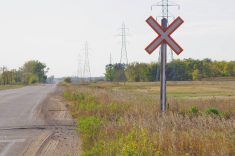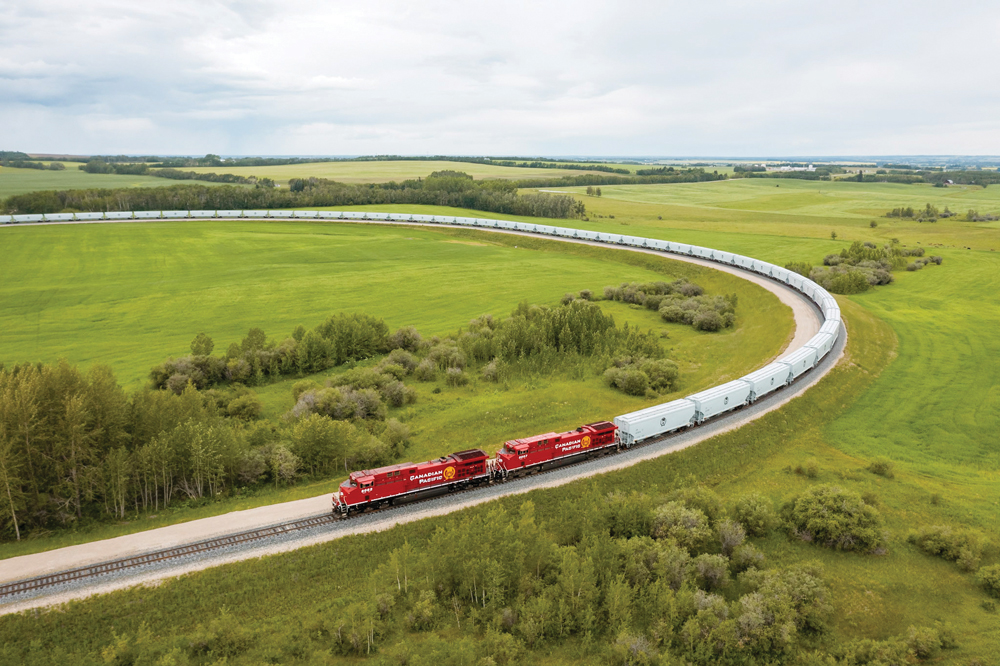A few weeks ago, my husband and I spent an interesting morning checking out a section of the Canadian National Railway west of the village of Firdale. It’s not an easy place to reach – several miles driving on country roads, and then a hike of nearly a mile through a pasture and/or along the railway track (for safety, not recommended) – but we found it very interesting. The spot is known as “The Big Fills,” and claims are made that it was the most expensive mile of railway constructed between Winnipeg and the Rockies.
Read Also

Counting the cost of grain shipment by rail
One would think that most of the durum from Western Canada should logically be shipped through the St. Lawrence Seaway to a customer in Algeria. But that’s not what happens.
The railway – then known as the Grand Trunk Pacific Railway – was originally built through here from 1905-07. In order to create a level track, cuts, grades and trestles were needed wherever the land was hilly, as it was in the Firdale area where the Pine Creek and Mule Creek valleys had to be crossed. The decision was made to build wooden trestles to cross these valleys. The one built across Pine Creek was 2,200 feet long, and the one over Mule Creek about half that length. Both were 85 feet high, and the pilings and bracing required were brought in during the winter from B.C. on flatcars to Edrans, about six miles to the north, and then hauled by mules on heavy sleighs to the trestle sites.
The remains of these pilings
REMNANTS:(Above) Originally, three 40-foot pilings one on top of another
had to be used under the trestles, in use until the 1920s. SAFER CROSSINGS:(Right) Concrete
bridges had to be built first over the creeks before the fill was put in.
can still be seen today. We snapped several pictures of them, though they’re not nearly that high now. But when they were built, three 40-foot pilings were needed, one atop the other, because along the creeks they sometimes had to be pounded in up to 35 feet, before becoming solid. Apparently nearly 5,000 of these pilings were used in the construction.
These trestle bridges were used until 1920, but they weren’t considered very safe. Fires were always a threat, because of possible sparks from the steam engines. Water barrels were placed at 200-foot intervals, and watchmen crossed after every train, checking for problems. The bridges tended to sway, and trains had to slow down to go over them. Railway officials decided on a different method to cross these valleys – an earth fill.
The method used became known as “big fills” and involved moving tons of earth from the hilltops to the south of the tracks to fill up the valley. First though, culvert-like concrete bridges had to be built over the creeks. The one over Pine Creek was two channelled, about 200 feet long, built with a curve for added strength. You can hike to this culvert bridge, as we did, but you cannot see through it because of the curve. Once these constructions were complete, the earthen fill was moved by rail and dumped into the gulley until the required height was reached.
The train still crosses on these fills, and we found it interesting to stand below, beside the creek, and watch a train speed past overhead – no danger from steam engine sparks today, of course!
For those who are energetic, the spot can be reached by driving two miles west of Sidney and about 5-1/2 miles north until you reach the railway track, and then walking west. An easier way to view it, but from a different angle, would be to take the passenger train from Portage la Prairie to Brandon.
Much of the information I’ve used is taken from an article by the late Fred Smith of the Firdale region. For more detailed information, read his article in Schoolhouse Memories,which includes memories from students and teachers of one-room country schools in North Norfolk Municipality. Copies are still available at the North Norfolk- MacGregor Library or may be available to borrow from your local library.
– Donna Gamache writes from MacGregor, Manitoba


















